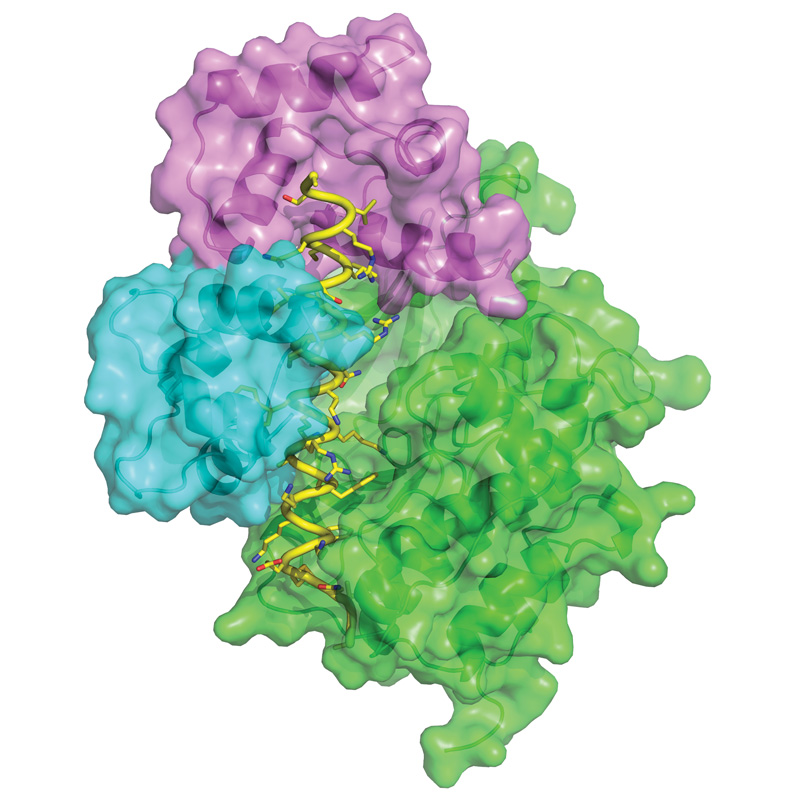How to shoot the messenger
EMBL scientists shed light on cellular communication systems involved in neurodegeneration, cancer and cardiovascular disease

Cells rely on a range of signalling systems to communicate with each other and to control their own internal workings. Scientists from the European Molecular Biology Laboratory (EMBL) in Hamburg, Germany, have now found a way to hack into a vital communications system, raising the possibility of developing new drugs to tackle disorders like neurodegeneration, cancer and cardiovascular disease. In a study published today in Science Signaling, they have pieced together the first snapshot of what two of the system’s components look like while interacting.
One way these signalling systems work is by triggering a flood of calcium ions inside the cell. These get picked up by a receiver, a protein called calmodulin which turns this calcium signal into action by switching various parts of the cell’s machinery on or off. Calmodulin regulates a set of proteins called kinases, each of which controls the activity of specific parts of the cell, thus altering the cell’s behaviour.
Using high-energy X-rays produced by the European Synchrotron Radiation Facility (ESRF) in Grenoble, France, and by the German Synchrotron Radiation Centre (DESY), in Hamburg, Germany, Matthias Wilmanns’ team at EMBL revealed the molecular structure of one of these kinases, a protein called Death-Associated Protein Kinase DAPK, when bound to calmodulin. The structure showed how calmodulin binds to a particular section of DAPK, switching the kinase on so that it can go and change the function of its targets. The team then worked out which of DAPK’s building blocks, or amino acids, were crucial for calmodulin to bind.
“Faulty versions of DAPK are involved in the development of some cancers,” says Wilmanns, “so we want to know more about how this protein functions to allow its better exploitation as an anti-cancer target.”
What’s more, DAPK has physical similarities to many of the other kinases controlled by calmodulin, meaning many of them are likely to interact with calmodulin in the same, or similar ways. Being able to see the three-dimensional structures of these proteins, how they clip together and alter each other’s behaviour means researchers can devise ways to manipulate this interaction with drugs.
“That will provide a platform to get into drug discovery,” says Wilmanns, adding, “obviously, this is the beginning of the story.” He is planning to do so in an ongoing collaboration with Adi Kimchi’s team at the Weizmann Institute in Israel and other groups from EMBL.



